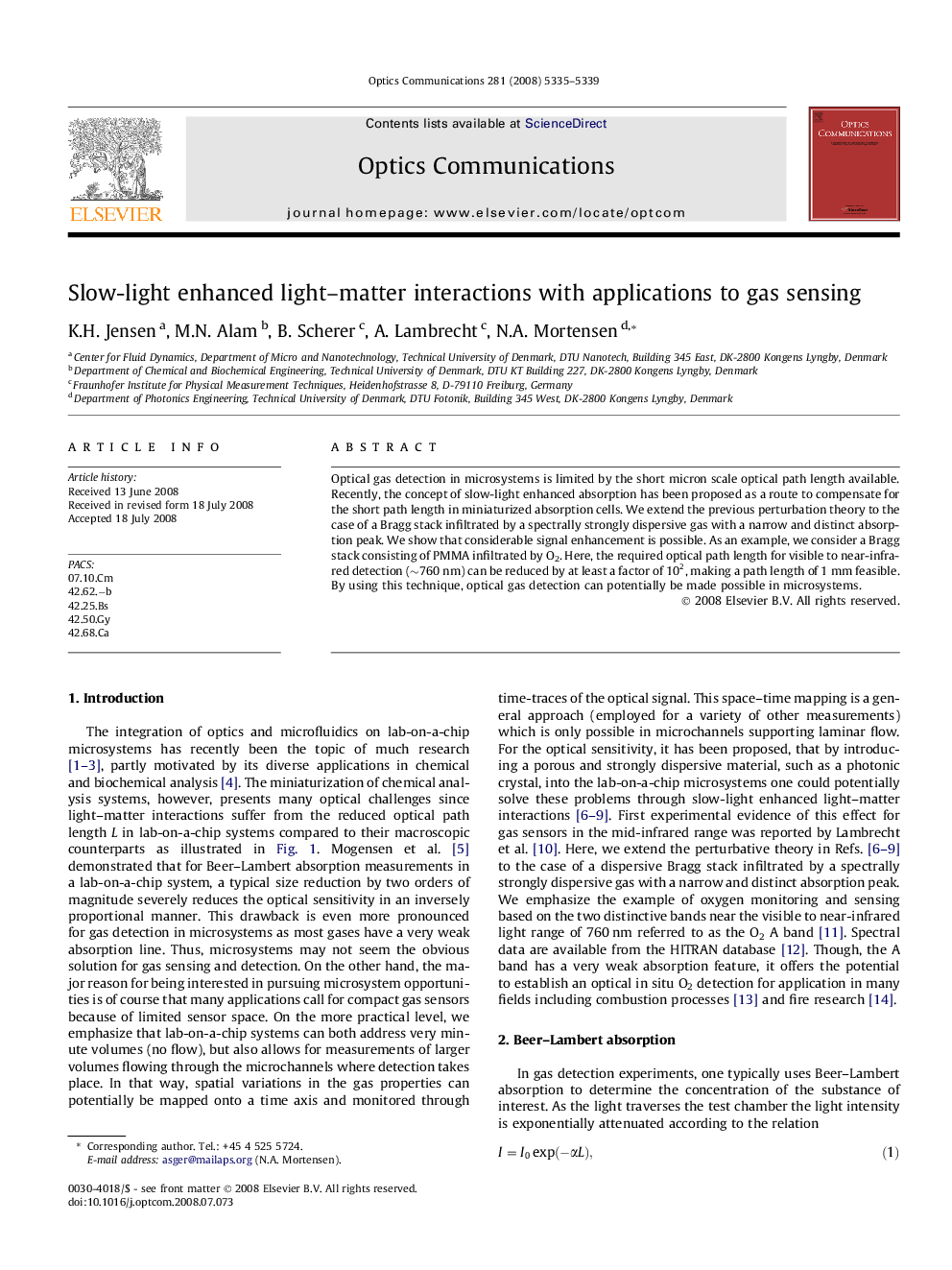| Article ID | Journal | Published Year | Pages | File Type |
|---|---|---|---|---|
| 1540480 | Optics Communications | 2008 | 5 Pages |
Abstract
Optical gas detection in microsystems is limited by the short micron scale optical path length available. Recently, the concept of slow-light enhanced absorption has been proposed as a route to compensate for the short path length in miniaturized absorption cells. We extend the previous perturbation theory to the case of a Bragg stack infiltrated by a spectrally strongly dispersive gas with a narrow and distinct absorption peak. We show that considerable signal enhancement is possible. As an example, we consider a Bragg stack consisting of PMMA infiltrated by O2. Here, the required optical path length for visible to near-infrared detection (â¼760Â nm) can be reduced by at least a factor of 102, making a path length of 1Â mm feasible. By using this technique, optical gas detection can potentially be made possible in microsystems.
Related Topics
Physical Sciences and Engineering
Materials Science
Electronic, Optical and Magnetic Materials
Authors
K.H. Jensen, M.N. Alam, B. Scherer, A. Lambrecht, N.A. Mortensen,
